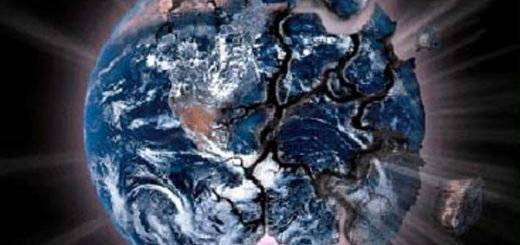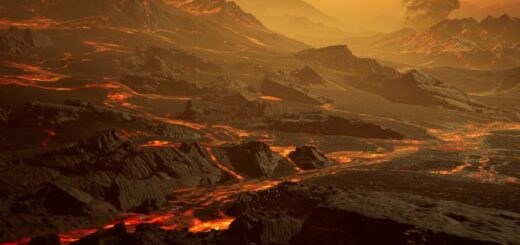Starlight Starbright: How Many Planets Will I Find Tonight

“Ringed World” Image Copyright 2015 by Marc Dantonio
Last time we talked about Habitable zones around stars within which orbiting planets can support liquid water. Liquid water as far as we know, can lead to life like us. It happened here after all. But how do we find these planets? Can we see them directly? The short answer to the first question is that it’s immensely difficult. The shorter answer to the second question is no, not really. Those answers are not very satisfying I realize, but we will discuss one way in which we actually do find planets around other stars and how it has opened up the Universe to us in ways we never dreamed. The problems associated with finding planets may seem insurmountable at first glance because even our best telescopes are hopelessly unable to resolve the round shape of the stars themselves which vastly outsize any planets. Except for a few notable exceptions, nearly all stars appear as mere points of light because their distance simply precludes our current capabilities from seeing otherwise. Let’s look at a cool analogy to understand the issue and how it relates to planets.
Alpha Centauri is the nearest star system to us. One of the stars in the system, Alpha Centauri “A”, is much like our Sun and is four light years away from us. The question is this: If we put Alpha Centauri “A” in our camera view, how far away from the camera would we have to move an ordinary U.S. quarter coin so that its diameter as seen in our camera matched that of the star? The answer is an astonishing 750 miles! No telescope yet created on Earth can see the disk of a quarter at that distance. This analogy is for the NEAREST star to us and all other stars are farther still than Alpha Centauri. It seems even more hopeless when you note that Earth-like planets are likely a hundred or more times smaller than the star.
So how do we find these planets if we cannot see the vast majority directly? Vast improvements in ground and space based telescopes have brought with their implementation various methods that we employ to pick them out. One such method is the “transit” which relies on catching a distant planet passing in front of its star as seen from Earth. But wait, I said we can’t SEE planets directly in general, so how can we see an Exoplanet pass in front of its host star? During a transit event, the starlight is dimmed by a tiny fraction during the time that the planet crosses the star’s face. That tiny dip in brightness gives us estimates for a number of parameters of the planet candidate. With subsequent confirmation through other techniques we can actually approximate its size, mass, and location around the star. Larger planets are easier to find than smaller Earth-like planets but our capability is improving greatly.
Fig 1: Binary star with two planets in transit. We look for the miniscule drop in light intensity that accompanies that passage. “Tiniest Of Dots” Image Copyright 2015 by Marc Dantonio
One superstar satellite in the transit arena was the Kepler Space Telescope which was launched in 2009 and changed the nature and understanding of our place in the Universe. Kepler found many thousands of transit events and researchers continue to examine the data to see if there are periodic cycles to the dimming. If the dimming was solidly periodic for a particular star, then this could signal the return passage of a planet dimming the stars light as it orbits. If the dimming went away then this was also evidence, but that perhaps it was a transient feature such as a magnetic storm on the star.
Researchers can also use transits to try to determine the composition of a planet’s atmosphere if it has one. Amazingly, quite a few molecules have been detected in Exoplanet atmospheres. This was done through examination of the spectrum of the star. First discovered by Francesco Grimaldi by accident in 1665, the spectrum is the rainbow of colors that we have all seen when light passes through a prism. It has also turned out to be perhaps the most useful tool we have in determining the nature of the stars and their retinue of planets. The reason is that the spectrum shows us more than just colors. We can classify the TYPE of star we are looking at by essentially making a tally of dark lines that appear in its spectrum. These lines are called “absorption lines” and occur because cooler gas in the star’s outer atmosphere absorbs some of the energy passing through it from the hotter atmosphere beneath. This process leaves a gap in the light spectrum that we see.
The significance is that elements present in every star’s atmosphere will produce lines that appear in the same relative place in a spectrum. Study of these lines provides us with the chemistry of the stars. Below are two photos of spectra I obtained with a specially outfitted camera. They are of two very different types of stars. You can see visually in Fig2 that the star’s spectrum has more blue, green, and red light and that the spectrum of the other in Fig3 shows far more red light than any other color. Beyond the color difference both spectra also show those dark absorption lines due to many different elements in the stars’ outer atmospheres.
Fig 2: Spectrum of star Vega showing dark lines caused by Hydrogen gas in its outer atmosphere. Lines always appear in the same relative place in a spectrum. Photo Copyright 2015 by Marc Dantonio
Fig 3: Spectrum of red star Betelgeuse (upper left red star in the constellation Orion) showing prolific lines caused by many elements in its outer atmosphere. The dark lines caused by Hydrogen are faint but are still present in the same location as in the spectrum above. Photo Copyright 2015 by Marc Dantonio
How does this help us examine Exoplanet atmospheres? When a planet passes in front of its star, we might see some NEW dark lines appear that weren’t there before which we call a ‘contamination’. These would be caused by the planet’s cooler atmospheric molecules absorbing some of the star’s light energy before it passes on to us and our telescopes. Interestingly if you look at the second spectrum of the star Betelgeuse above, you can see a fat cluster of dark lines off to the right in the red end of the spectrum. THOSE lines come from molecules of water vapor in OUR atmosphere which is actually contaminating the spectrum of that distant star! This same type of process has found water, sodium, potassium, nitrogen, and more in Exoplanet atmospheres. We may find a planet in its star’s Habitable zone with oxygen, nitrogen, and water vapor, in its atmosphere. It would be a momentous discovery to find another “Earth”.
That day may arrive sooner than later and when it does, our Universe may seem the tiniest bit smaller.
See you next time!



 Creators of mankind
Creators of mankind Description of “Tall white aliens”
Description of “Tall white aliens” Where they came from?
Where they came from? About hostile civilizations
About hostile civilizations The war for the Earth
The war for the Earth “Tall white aliens” about eternal life
“Tall white aliens” about eternal life Video: “Nordic aliens”
Video: “Nordic aliens” Aliens
Aliens Alien encounters
Alien encounters The aliens base
The aliens base UFO
UFO Technology UFO
Technology UFO Underground civilization
Underground civilization Ancient alien artifacts
Ancient alien artifacts Military and UFO
Military and UFO Mysteries and hypotheses
Mysteries and hypotheses Scientific facts
Scientific facts


















